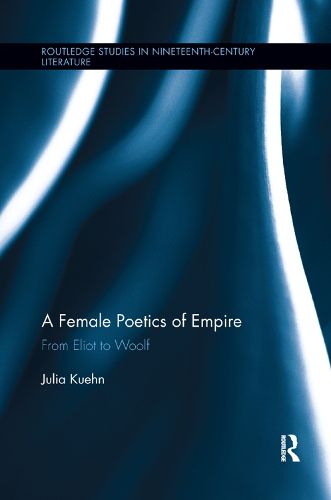Readings Newsletter
Become a Readings Member to make your shopping experience even easier.
Sign in or sign up for free!
You’re not far away from qualifying for FREE standard shipping within Australia
You’ve qualified for FREE standard shipping within Australia
The cart is loading…






Many well-known male writers produced fictions about colonial spaces and discussed the advantages of realism over romance, and vice versa, in the ‘art of fiction’ debate of the 1880s; but how did female writers contribute to colonial fiction?
This volume links fictional, non-fictional and pictorial representations of a colonial otherness with the late nineteenth-century artistic concerns about representational conventions and possibilities. The author explores these texts and images through the postcolonial framework of ‘exoticism’, arguing that the epistemological dilemma of a ‘self’ encountering an ‘other’ results in the interrelated predicament to find poetic modalities - mimetic, realistic and documentary on the one hand; romantic, fantastic and picturesque on the other - that befit an ‘exotic’ representation. Thus women writers did not only participate in the making of colonial fictions but also in the late nineteenth-century artistic debate about the nature of fiction.
This book maps the epistemological concerns of exoticism and of difference - self and other, home and away, familiarity and strangeness - onto the representational modes of realism and romance. The author focuses exclusively on female novelists, travel writers and painters of the turn-of-the-century exotic, and especially on neglected authors of academically under-researched genres such as the bestselling novel and the travelogue.
$9.00 standard shipping within Australia
FREE standard shipping within Australia for orders over $100.00
Express & International shipping calculated at checkout
Many well-known male writers produced fictions about colonial spaces and discussed the advantages of realism over romance, and vice versa, in the ‘art of fiction’ debate of the 1880s; but how did female writers contribute to colonial fiction?
This volume links fictional, non-fictional and pictorial representations of a colonial otherness with the late nineteenth-century artistic concerns about representational conventions and possibilities. The author explores these texts and images through the postcolonial framework of ‘exoticism’, arguing that the epistemological dilemma of a ‘self’ encountering an ‘other’ results in the interrelated predicament to find poetic modalities - mimetic, realistic and documentary on the one hand; romantic, fantastic and picturesque on the other - that befit an ‘exotic’ representation. Thus women writers did not only participate in the making of colonial fictions but also in the late nineteenth-century artistic debate about the nature of fiction.
This book maps the epistemological concerns of exoticism and of difference - self and other, home and away, familiarity and strangeness - onto the representational modes of realism and romance. The author focuses exclusively on female novelists, travel writers and painters of the turn-of-the-century exotic, and especially on neglected authors of academically under-researched genres such as the bestselling novel and the travelogue.